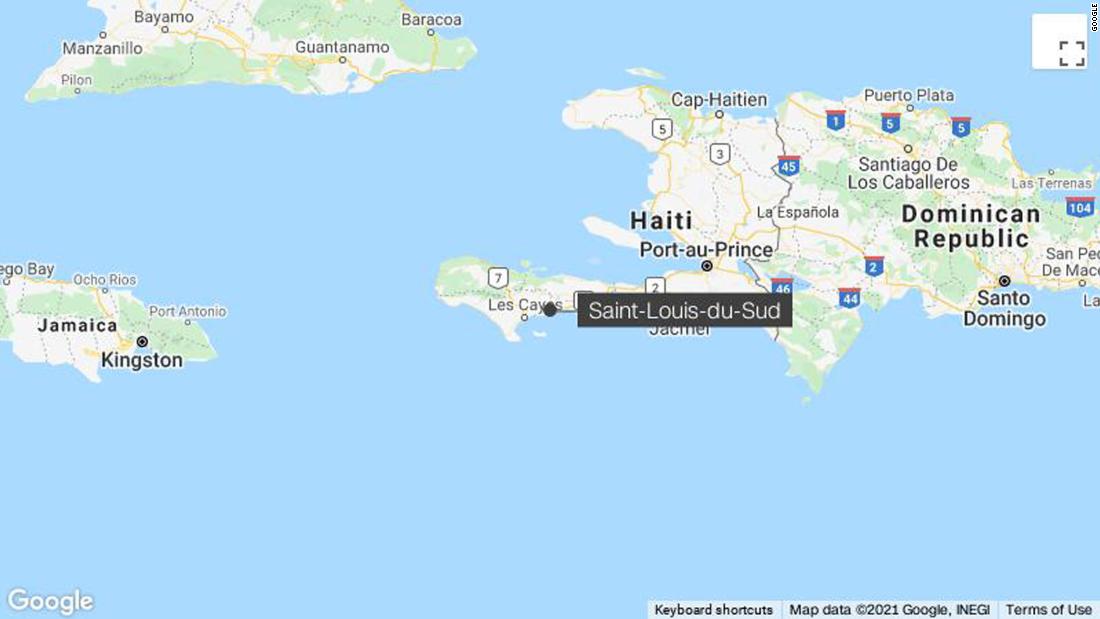Haiti continues to feel aftershocks following quake
The earthquake was about 12 kilometers (7.5 miles) northeast of Saint-Louis-du-Sud and 10 kilometers deep, according to the US Geological Survey (USGS).
“There are reports of significant damage to homes, roads, and infrastructure,” American Red Cross spokeswoman Katie Wilkes said.
Videos posted on social media offer a glimpse of the widespread destruction. One from Les Cayes shows a street strewn with rubble and what is left of a number of buildings. Dust fills the air.
A man in the video said that he was lucky that the building he was in did not collapse, but many other houses in the area did.
“There are a lot of wounded on the street,” he said.
A 5.2-magnitude aftershock hit later in the morning about 20 kilometers west-northwest of Cavaillon, Haiti, according to the USGS. That was followed by several more, including a 5.1-magnitude aftershock around noon.
A tsunami threat that had been issued for the region has passed, according to the US Tsunami Warning System.
Haiti is in the cone of Tropical Storm Grace, and can expect tropical storm-force winds and heavy rain that could lead to flash flooding Monday into Tuesday, CNN Meteorologist Haley Brink said.
Heavy rain could lead to localized flooding and mudslides across the region, according to Brink.
A tropical storm watch is likely to be issued for Haiti later Saturday after one was issued for the Dominican Republic, which shares the island of Hispaniola with Haiti.
Haitian President Jovenel Moise was killed July 7.
Merone is in Port-au-Prince, about 100 miles from Saint-Louis-du-Sud, and said the shaking there lasted “more than five to ten seconds,” and both sides of his house were shaking.
Henry said he has mobilized the government to assess and help.
“Following the earthquake that caused enormous damage in the South, Grand’Anse and Nippes, I have already mobilized the entire government team to adopt all necessary measures- as a matter of urgency,” the tweet read.
Henry urged Haitians to band together in solidarity.
“I offer my sympathies to the relatives of the victims of this violent earthquake which caused several losses of human lives and property in several geographical departments of the country,” Henry tweeted.
“I appeal to the spirit of solidarity and commitment of all Haitians, in order to form a common front to face this dramatic situation that we are currently experiencing,” another tweet read.
The Red Cross’ emergency response system has been activated and the organization is “identifying urgent needs on the ground,” Wilkes said.
Correction: An earlier version of this story gave the incorrect depth of Saturday’s earthquake near Haiti. It was 10 kilometers deep, according to the USGS.
CNN’s Theresa Waldrop contributed to this report.
![]()


